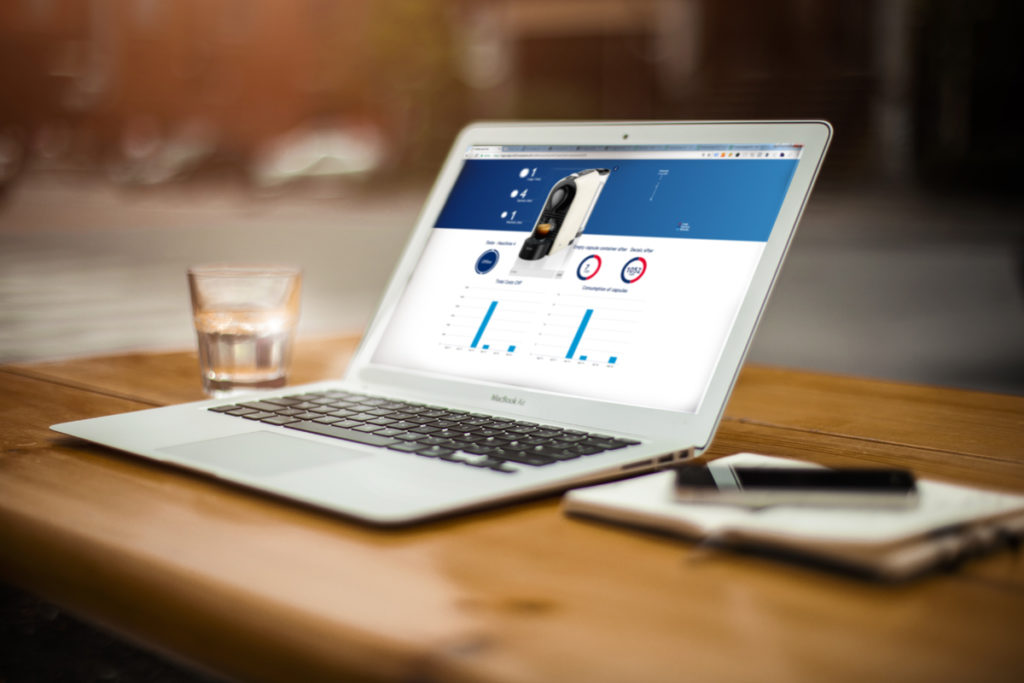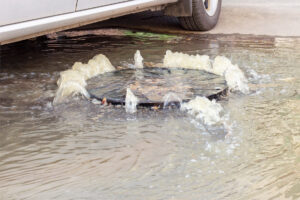For traditional products, companies lose access after the product has been delivered to the customer. Smart, connected products provide access to data which is collected and transmitted in the progress of the product usage. The business model can be extended far beyond the point of sale.[1]
With the following concepts, the functionality of smart, connected products can break existing industry logic and generate continuous revenue streams.
Ecosystem
New insights are gained by analyzing the transmitted data from smart, connected products. These insights help to develop software enhancements and online services tailored to customer needs. This opens up opportunities for continuous income far beyond the point of sale.[1]
These opportunities can be increased by creating an ecosystem of smart, connected products, software and online services. The seamless integration of the components increases the perceived value for the customer. For example, the Apple iPod enhances the enjoyment of listening to music by connecting to the iTunes software and the online store with easy search and convenient purchase functionality.[2]
If a customer already owns an element of the ecosystem, he will be incentivized to use other compatible products and services in order to increase the generated value for him. The flexibility and extensibility of the ecosystem are key features for continuous revenue. With the development and combination of a multitude of different services and products, the full potential is exploited. Licensing to third parties is another way to generate revenue and increase value for the customer.[1] The choice of developing an ecosystem for an opened or closed system is of strategic importance.
Product-as-a-Service
Traditionally, manufacturing companies generate revenue trough the transfer of ownership of the manufactured products. From this point on, the purchaser bears all costs arising from the operation and maintenance of the product. He also bears the risk of downtime and defects, unless they are covered by the warranty.[3]
With smart, connected products manufacturers get access to the product data. Thus, any errors that occur can be detected, reduced and eliminated prematurely. This opens up a range of new business models. With the Product-as-a-Service model, the product remains the property of the manufacturer. He therefore bears full responsibility for all costs associated with the operation of the product. In return, the customer pays an ongoing fee. Instead of the full product price in advance, the customer will only be charged for the service he actually uses. Reductions of operating costs (for example, optimization of energy consumption) or efficiency gains increase the added value for the manufacturer in this model.[3]
Sensor-as-a-Service
The wealth of data generated by smart, connected products makes this model possible. The psychical measurement values are no longer used only for one application. Prepared in a suitable form they are made available for additional applications.[4]
The data itself is the basis for revenue generation. A company could use sensors to detect parking spaces. On the one hand, the data is of interest to car drivers, who can find a free parking space a lot faster. In a different form, these data are of interest to authorities to identify parking offender with less effort. Sensor-as-a-Service thus represents a model that focuses on a “multi-sided” market for sensor data.[4]
References list
- ↑ Mayer, P. (2010, März). Economic aspects of SmartProducts. Whitepaper.
Instute of Technology Mangement, University of St. Gallen. Abgerufen
von http://www.smartproductsproject.eu/media/stories/smartproducts/publications/Whitepaper_Economic_Aspects_Of_SmartProducts.pdf , S. 4 - ↑ Osterwalder, A., Pigneur, Y., & Wegberg, J. T. A. (2011). Business Model
Generation: ein Handbuch für Visionäre, Spielveränderer und
Herausforderer ; [entwickelt in Zusammenarbeit mit 470 überwältigenden
Profis aus 45 Ländern]. Frankfurt: Campus-Verl, S. 51 - ↑ Porter, M. E., & Heppelmann, J. E. (2014, November). How Smart, Connected Products Are Transforming Competition. Harvard Business Review, S. 84
- ↑ Fleisch, E., Weinberger, M., & Wortmann, F. (2014). Geschäftsmodelle im Internet der Dinge. HMD Praxis der Wirtschaftsinformatik, 51(6), S. 822
Series: Moving into a new business era with smart, connected products
Part 1: Introduction
Part 2: The importance of business model innovation
Part 3: Laying the foundation through strategic decisions
Part 4: Breaking the valid industry logic
Part 5: 5 value stages of an IoT application
Part 6: Transforming the value chain
Part 7: The value generation of things in the Internet of Things
Part 8: Fundamental design of smart, connected products
Part 9: Requirements for the technological infrastructure in the Internet of Things
Part10: Creating added value by advancing to smart products




